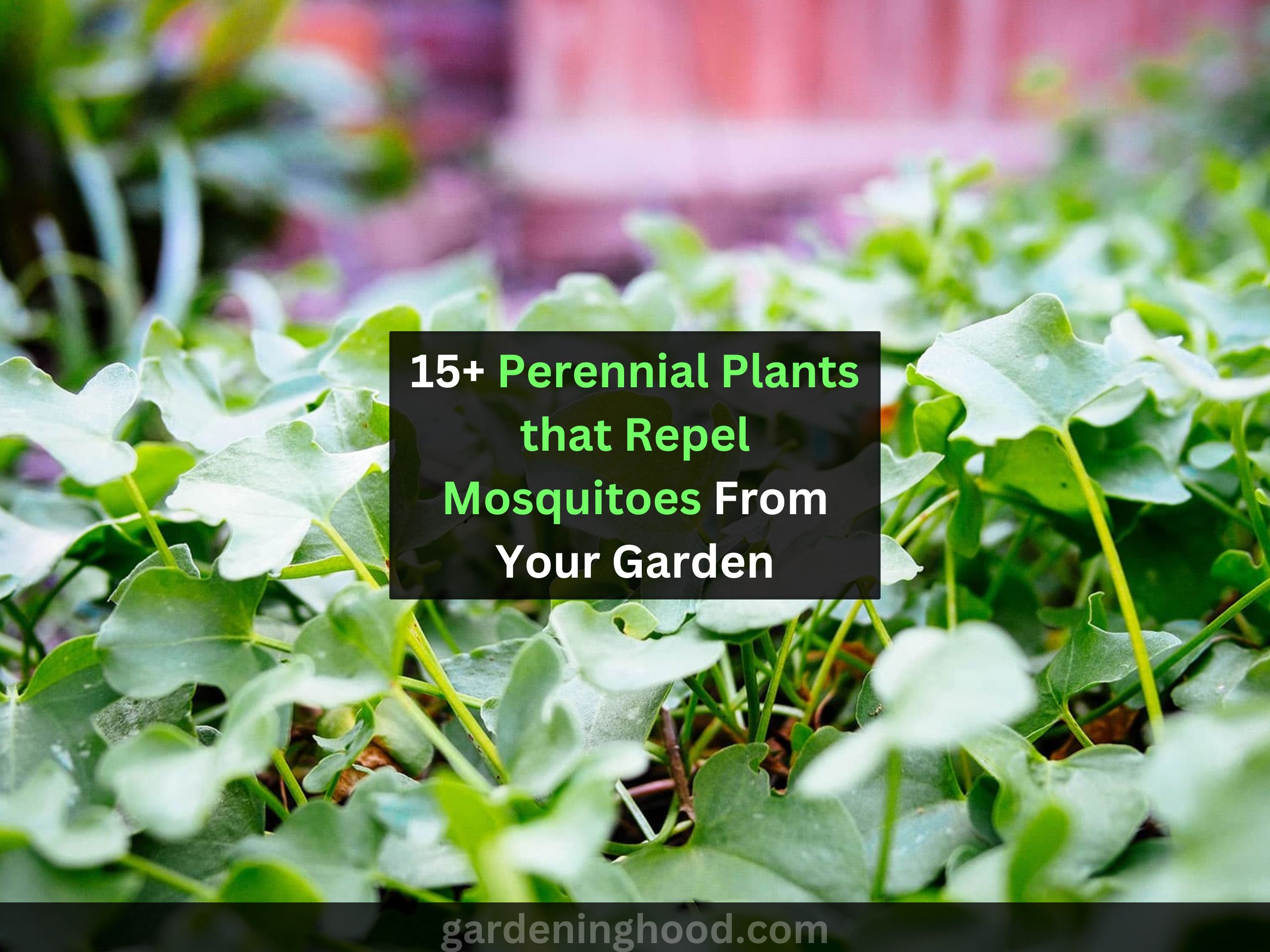10 Edible Mushrooms that Grow on Wood (And How to Grow at Home?)
Let us know some of the Edible Mushrooms that Grow on Wood. Mushrooms that love wood and are edible are more prevalent than you might realize. Many edible species of mushrooms grow on wood, as opposed to the familiar white button mushroom, as well as brown creminis and portobellos. Many of the best edible mushrooms, including oyster mushrooms, shiitakes, chicken-of-the-woods, chanterelles, wine caps, and many others, actually grow on wood.
There are various kits or spawn sources available because wood-loving mushrooms are typically easy to cultivate (and you don’t have to deal with manure!)
Several kinds of oyster mushrooms, shiitake mushrooms, lion’s mane mushrooms, and wine caps are among the varieties of mushrooms I’ve grown at home, most often from kits. In my experience, maintaining proper growing conditions might be challenging, but some mushrooms, including oysters and wine cap mushrooms, are great for beginners to cultivate at home.
The following list of ten edible mushrooms that grow on wood is available as ready-to-grow kits.
10 Edible Mushrooms That Grow on Wood That Can Be Grown at Home
1. Oyster Mushroom
The oyster mushroom is the easiest type of wood-loving fungus to grow at home. It can flourish indoors or outdoors, grows crazily quickly, is not particularly temperature-sensitive, can produce many flushes of mushrooms for you to harvest, and can eat virtually any kind of woody plant material. On cotton garments, toilet paper rolls, and even cardboard, some people have grown oyster mushrooms.
Oyster mushroom mycelium, which spreads throughout the growing media like a white root, grows so quickly that it occasionally outgrows minor mold infections. Common strains are primarily white/gray, black, blue, and brown in hue. The top of the hat will have color variations, and the amount of light they receive will determine how intense the colors are.
Making sure the baby mushrooms (pins) can grow in an environment with high humidity and excellent airflow is the only difficulty you might encounter. Due to their high sensitivity to carbon dioxide, oyster mushrooms will grow slender (but still edible) mushrooms if not given enough access to fresh air.
How to grow at home?
Growing oyster mushrooms is very difficult to get wrong, especially if you use a kit. When you eventually start obtaining mushrooms, though, you’ll see that mature oyster mushrooms emit a lot of spores. Be careful not to breathe in any mushroom spores, especially if many oyster mushroom kits are being grown in the same space.
2. King Oyster Mushroom
The king oyster, an appropriately named meaty cousin of the common oyster mushroom, has a thin cap and a thick, meaty stalk that grows upward. The texture is solid and perfect for grilling or frying in large slices, and the flavor is remarkably close to that of the tree oyster.
King oyster mushrooms naturally appear in the fall even though they are native to the Mediterranean region because they like low temperatures to grow in. Because of this, getting king oysters to produce mushrooms from your kit block is the most difficult element of cultivating them. Pin (baby mushroom) formation is triggered by chilly temperatures.
How to grow at home?
- King oyster producers prefer to grow them in the fall and winter because of how temperature-sensitive they are, employing the naturally low temps outside or in their garage to encourage fruiting.
- Additionally, you might try placing your king oyster block in front of an air conditioner or storing it in the fridge for a few days. However, for a dedicated home grower, employing an old refrigerator, tiny refrigerator, or even an old freezer with a third-party temperature controller set to 50°F (10°C), is the optimal answer. You can increase the temperature after you notice young mushrooms.
3. Golden Oyster Mushroom
The golden oyster is a heat-loving species unique from other members of the oyster mushroom family if you can’t cultivate cool-weather mushrooms. Golden oysters prefer normal room temperatures and start to expand quickly when the temperature reaches about 80°F (27°C). But compared to the more widely available tree oyster, the total yield of the harvest appears to be lower.
Although some people enjoy eating raw or undercooked mushrooms, undercooked or uncooked golden oysters can have an unpleasant flavor. Once cooked, they have a distinct, nutty flavor that is almost cashew-like. Be aware that as you cook them, the beautiful yellow hue starts to disappear.
How to grow at home?
People enjoy cultivating golden oysters for their vivid yellow color in addition to their distinctive flavor. Depending on how much light they are receiving, the golden color will vary in intensity. Your mushrooms will appear golden and vivid if you grow them outside in the sunlight or indoors under a full-spectrum grow lamp.
4. Pink Oyster Mushroom
The pink oyster, another oyster mushroom that grows well in warm climates, has a delicate, savory flavor that is suggestive of seafood. The pink oyster mushroom’s texture completely depends on its size, with tiny ones being more delicate and larger ones being chewier and meatier.
People either love or loathe the taste of this mushroom, despite how beautiful it is. Some people find the erratic texture and the faint marine flavor to be turnoffs. But it’s not fussy about growing conditions and is incredibly simple to maintain for the home gardener.
How to grow at home?
The optimal time to harvest pink oyster mushrooms is when the cap first opens. Additionally, they have a very limited shelf life and decay in less than a week after harvest. As a result, store your harvest in the fridge in a breathable bag for no more than a few days before cooking. Pink oysters, like golden oysters, have a more intense pink color when grown in high-light environments.
You may also browse related articles to know more about the plant world, 5+ Tips to grow Cucamelon Flowers – Do Cucamelons need to be pollinated?
5. Shiitake Mushroom
Shiitake mushrooms have quickly gained popularity in major grocery stores, and with good reason. They are a meatier, tastier substitute for the ubiquitous white/brown mushrooms that are available everywhere. They are also simpler to cultivate at home.
The majority of kits you’ll come across are constructed of grains, sawdust, or some combination of those, as well as certain dietary supplements like soybean or rice hulls. Your first harvest from these shiitake kit varieties will typically come in a few weeks. If you don’t mind having to wait longer between harvests, shiitakes are also quite simple to cultivate in logs.
With log culture, you insert tiny wooden plugs infused with shiitake into hardwood logs and allow the shiitake to spontaneously spread throughout the log, producing smaller but dependable harvests over several years.
How to grow at home?
- Although challenging, getting shiitake to fruit is not too difficult for beginners. When I grew shiitake mushrooms for the first time from a kit, even though they were “ready to grow” and I had already soaked and refrigerated them by the directions, I observed nothing happen for more than a month.
- Try this if this also happens to you. Allow your shiitake block to nearly dry out completely. After that, rehydrate it by poking some holes in it with a knife to aid the process, and soak it once again for 24-36 hours in ice-cold filtered water. I believe I spent just a little bit more than 30 hours.
- If you don’t have access to filtered water, you can fill a bucket with tap water and leave it out so that the chlorine can largely disappear for a day or two before use. To prevent it from drying out, I cleaned the block, gave it a nice, strong smack (without shattering it), and placed it in the refrigerator overnight.
- In a week I saw young mushrooms, and not even a week later I was selecting my first shiitake mushrooms. Then I took it out and followed the fruit instructions with my kit (i.e., keeping it in a humidity tent and sprinkling it with water many times daily).
6. Wine Cap Mushroom
Only the wine cap mushroom seems to thrive outside, and it’s also exceedingly simple to grow, hardly requiring a hands-off approach once it establishes itself in your garden. Large, meaty mushrooms known as “wine caps” have dark burgundy caps that appear to have been stained by red wine.
When cooked, they also contain hints of red wine. As long as the environment isn’t too hot and dry, wine cap mushrooms can flourish in practically any garden. Additionally, the mycelium may readily survive in northern temperate areas since it develops behind a layer of insulating mulch.
How to grow at home?
- I’ve already covered a lot about how to grow wine cap mushrooms in the garden, but in a nutshell, you should choose a bed that receives some shade, mulch it firmly with chips of wood, preferably, and spread your Stropharia spawn between two layers of mulch.
- Until your wine caps get set, water well and maintain wetness. You can continue to receive wine cap mushrooms for years if you renew the mulch in your bed each year.
7. Lion’s Mane Mushroom
The lion’s mane is one of the most distinctive-appearing wood-loving mushrooms. It’s probable due to the health advantages that you have heard of it before. The first lion’s mane I ever had was one I grew myself. It’s also available in some grocery stores, but I’ve yet to see any in my neighborhood.
The mushroom develops into a massive puffball with protruding “teeth,” like pom poms (which is another name it goes by). Like the rest of the lion’s mane, the teeth are soft. Lion’s mane has a very mild, delicate mushroom flavor with hints of lobster or crab. It even sorts of crumbles apart like crab meat when cut and fried. Try the lion’s mane if you don’t like strong mushroom flavors.
Although the lion’s mane does need low temperatures to encourage fruiting, it is less particular than oysters. Lion’hairne has been fruited at room temperature.
How to grow at home?
- Getting adequate fresh air flow to encourage full growth of the “teeth” that hang down while simultaneously maintaining high humidity levels so the mushroom grows to a full size is the most frequent issue individuals encounter when growing a lion’s mane. With only a grow tent, this is difficult.
- One method is to fruit it in a “shotgun fruiting chamber” (SGFC), which is a sizable tub covered in perforations to allow free airflow and a layer of moist perlite to maintain a high level of humidity. Freshcap Mushrooms has a simple manual for constructing an SGFC. However, your lion’s mane is still totally edible and will still taste the same even if it resembles a cauliflower more than a mane.
8. Beech Mushroom
Beech mushrooms are still mostly unknown, but if you’re fortunate enough to find them in your grocery store (they may be marketed as clamshell or shimeji mushrooms), they’re a deliciously uncommon surprise. Beech mushrooms have either brown or white caps and resemble regular mushrooms in appearance, but when cooked, they develop a mildly sweet and nutty flavor and a firm texture.
These mushrooms are quite simple to grow in kits and produce huge, prodigious clusters of growth.
How to grow at home?
You can collect the entire clump of beech mushrooms because they grow in big clumps. With a knife, you may slice them straight at the root and twist the mushroom clump off. It will take longer for the mycelium to colonize if you are growing from spawn, so take extra care to pasteurize or sterilize your growing media thoroughly. Your beech mushrooms aren’t cooked enough if they taste bitter or astringent.
9. Enoki Mushrooms
Although they are not recommended for novices, enoki mushrooms are versatile and distinctive mushrooms that may be cultivated at home. Although they have a fairly mild flavor, people tend to eat them more for their crisp, “al dente” texture when cooked rather than their flavor.
The cool thing about enoki mushrooms is that they don’t resemble the enoki mushrooms you see in the grocery store when they’re in the wild. In the wild, they resemble stumpy mushrooms with more red, brown, or orange coloring. However, due to the methods used in mushroom farms (see the suggestions below), they end up developing long, thin stems that are almost all white.
Not just for soups, enoki mushrooms are useful. They can be stir-fried or added uncooked to salads. One of the ways that the late, renowned Italian chef Antonio Carluccio suggested serving enoki mushrooms was as a tiny bunch wrapped in a slice of prosciutto and topped with some lemon and olive oil. Try wrapping some cooked enoki mushrooms in bacon for a rich treat if you prefer your mushrooms cooked.
How to grow at home?
- To start fruiting, you can use the same techniques as with king oyster mushrooms. Enoki mushrooms should be grown in the dark to prevent color development in them. You need more carbon dioxide in the air if you want long, noodle-like enoki mushrooms with tiny caps.
- Professional growers of enoki mushrooms accomplish this by placing a plastic cone or shield over the growing medium, which is typically a huge bottle filled with sawdust and other supplements to raise CO2 levels. This is possible because, like animals, mushrooms breathe in oxygen and exhale CO2, and CO2 is heavier than oxygen.
- A fun movie demonstrating this at an enoki mushroom farm may be found below. Take note of the shields that surround the bottles’ tops.
10. Chanterelle mushrooms
The Cantharellus, Gomphus, Polyozellus, and Craterellus families of mushrooms all contain several diverse species known as chanterelle mushrooms.
The term “chanterelle” is just used interchangeably for all of them because they are similar enough in appearance and flavor. Some of the most well-liked mushrooms in the world are chanterelles. They have a funnel-like form and resemble oyster mushrooms in that they have very distinct “gills” that extend into the stem.
The Greek term kantharos, which means “cup,” gave rise to the English word “chanterelle,” which refers to the shape of the mushroom.
Common hues for chanterelles are white, yellow, or orange. Many chanterelle species emit a nice, fruity aroma that is reminiscent of apricots.
They have a mild peppery flavor.
How to grow at home?
- You need trees where you want chanterelles to grow in your backyard or anywhere else. Chanterelle mushrooms thrive in soils with low pH, low nitrogen content, and adequate drainage (acidic).
- Chanterelles thrive in damp situations when the temperature isn’t too hot, and their optimal pH range is between 4 and 5.5. The best month to choose is July because it normally experiences the most rain throughout the year.
- You must first rake or till the soil to make it nice and loose before you can begin growing your chanterelles. Compared to other varieties of mushrooms, chanterelles don’t produce as many spores.
- Therefore, breaking up a few old chanterelle mushrooms and scattering them around the area is typically the best method for planting them in the ground. It’s time to pick the chanterelles once they have grown.
- You can just pull them out, but doing so might harm the mycelium and reduce the likelihood thaotheral mushrooms will grow there again in the future.
Conclusion
Three factors are typically necessary for mushroom growth: a food source, water, and air. These three components can be discovered in nature as a tree’s roots penetrate the ground. It should be emphasized that practically all types of mushrooms are saprophytes, meaning they eat naturally occurring decaying organic debris.
Numerous environments, including wet, decaying, and diseased woodlands, are home to mushrooms. They eat the fibers of the wood. When it comes to logs, the wood fibers become damp, rot, and promote the growth of mushrooms.
Thanks for reading! Happy gardening!


